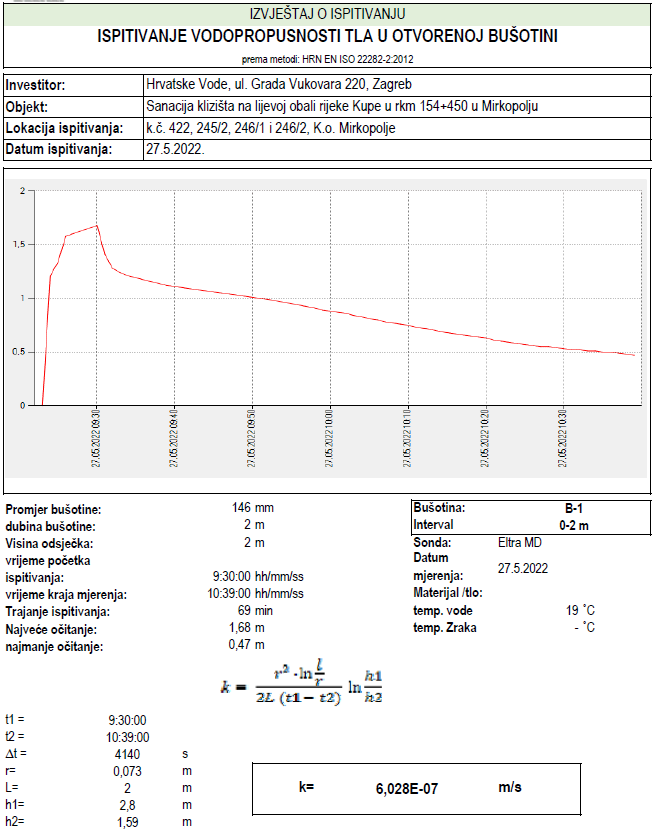The purpose of this test is to assess the soil’s permeability. A major advantage of field testing is that it provides more accurate results, as the soil in the immediate “vicinity” of the borehole remains undisturbed. The test can be conducted using a constant-flow method or a variable water level method within the borehole, depending on the expected soil composition.
The borehole must first be prepared and cleaned, and protective casings installed to the test level. If borehole collapse is anticipated, filter material may also be installed along the testing depth as needed.
The constant-flow method is generally used when the expected permeability coefficients are greater than 10⁻⁶ m/s. Water column measurements in the borehole are taken using a probe lowered into the borehole. The water flow rate is chosen to allow a water rise in the borehole of at least 10 cm in the first minute, to ensure significant changes in water level during measurement (e.g., for a test increment of 1 m and a diameter of D=10 cm, a 10 cm variation at a flow rate of 100 l/min corresponds to permeability of approximately 10⁻³ m/s; if the expected flow is about 1 l/min, permeability is less than 10⁻⁶ m/s).
The measurement begins by activating the probe before water is added to the borehole. The chosen flow rate is maintained throughout the test. The water level in the borehole should be measured at least once per minute during the 20-minute test period. After water addition stops, water levels are monitored for an additional 10 minutes, with post-addition measurements beginning within 30 seconds. The test may conclude when the water level stabilizes, i.e., if three consecutive measurements (over three minutes) do not vary by more than 1 cm, or after 60 minutes.
The variable water level method is used when expected permeability coefficients range from 10⁻⁹ m/s to 10⁻⁶ m/s. Before starting, the water level in the borehole must be stabilized, and the stabilized level should be recorded. Water levels are measured using a probe lowered into the borehole. Water is added to the borehole, and the change in water level over time is recorded. Alternatively, if the groundwater level is relatively low, water can be pumped from the borehole, and the inflow over time is measured. Measurements start prior to water injection/pumping, with intervals not exceeding 60 seconds and adjusted based on permeability. The test typically concludes once 75% of the water has drained or refilled.
A report is generated based on the testing results. Geokol Ltd. is accredited for both of the above permeability testing methods.

